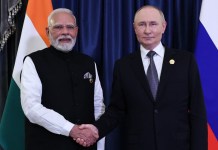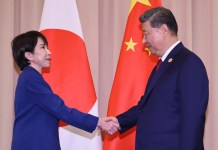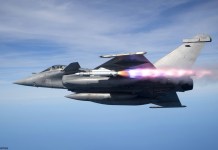Yesterday, commanders from India and China were engaged in mind-boggling, 14-hour intense negotiations over the disengagement process from all flashpoints along the Line of Actual Control (LAC).
Earlier, it was reported that both India and China have agreed to pull back their soldiers but Indian Today quoting its ‘key sources’ in the government write that Chinese are hesitant to pull back from Pangong finger area.
Another India media house – Zee News writes that India has again deployed tanks along the Line of Actual Control. The decision to deploy tanks is in the region is a precautionary move as tensions between India and China are expected to rise.
According to the report, Beijing has refused to back-off from Finger 4 area in Pangong Tso. As a result, the Indian Army has increased the deployment of tanks along East Ladakh border to ward off any threat from China’s People’s Liberation Army (PLA).
While both India and China had reached an agreement to disengage at Galwan Valley, Hotsprings and Gogra at the fourth round of Corps Commander-level talks, Zee sources claim that China made it clear that it would not back-off from Finger 4 area.
According to experts, China’s refusal to back-off from Finger 4 area is expected to increase tensions between the two nuclear-armed nations. The Indian Army remains on high alert with 60,000 soldiers, T-90 tanks, Apache attack helicopters, Sukhoi fighter jets, Chinook and Rudra helicopters deployed along the LAC.
Meanwhile, the Indian government’s high-power China Study Group reviewed the results of the comprehensive meeting between India’s XIV Corps Commander and the Xinjiang Military District Commander.
The meeting was attended by external affairs minister – S. Jaishankar, National Security Adviser – Ajit Doval, senior-most officials of the government, and security agencies chiefs.
Hindustan Times quoting its sources, writes – disengagement efforts have been consolidated at the Galwan sector (Patrolling Point 14), and there has been a thinning out of troops at Patrolling Point 15 (Gogra) and Fingers 4 and 5 of the Pangong Tso.
The meeting of the corps commanders also discussed and defined specific timelines for total disengagement at PP15 and Pangong Tso. According to Indian officials, there is thinning of soldiers of both sides on the ridge of Finger 4 as a precaution, with the Chinese PLA now moving to Finger 6 with a limited presence in Finger 5.
The officials added that based on the exhaustive meeting, it looks like things have cooled down between India and China (contracting to other reports) and the Chinese PLA is showing signs that it is working towards returning to the April 20 status quo.
HT also learns that the Chinese PLA has withdrawn beyond its side of the Line of Actual Control (LAC) at Patrolling Point 17 (Hot Springs) with all its tents, vehicles and material. Even at Gogra, Chinese PLA has a very thin presence of around 30 PLA soldiers in forward locations, and deadlines have been set for a total removal by this weekend.
There seems to be some thaw in tensions at the LAC after troops of India and China started to pullback, following several rounds of talks at corps commanders and diplomatic levels according to Times of India.
However, New Delhi is closely watching the 1,597km LAC in Ladakh and the 1,127km LAC in Arunachal Pradesh and the soldiers remain on high alert. It is only after the disengagement is accomplished, the two Special Representatives (Ajit Doval and Wang Yi) will discuss steps towards complete de-escalation and ensure that incidents like Galwan Valley are not repeated ever again.




